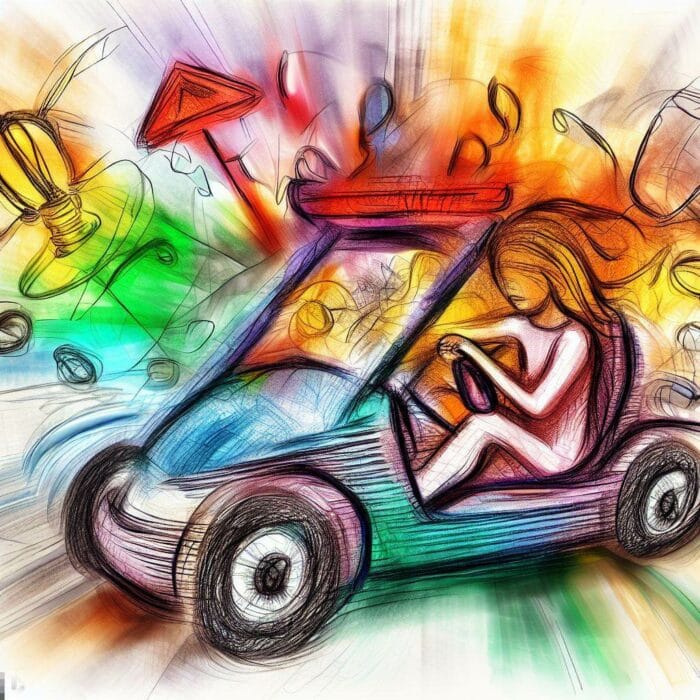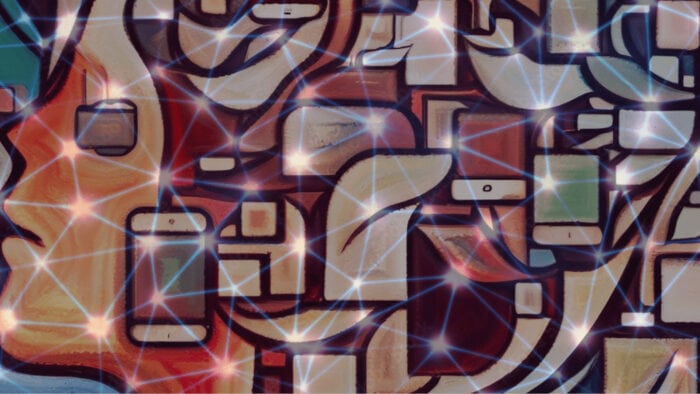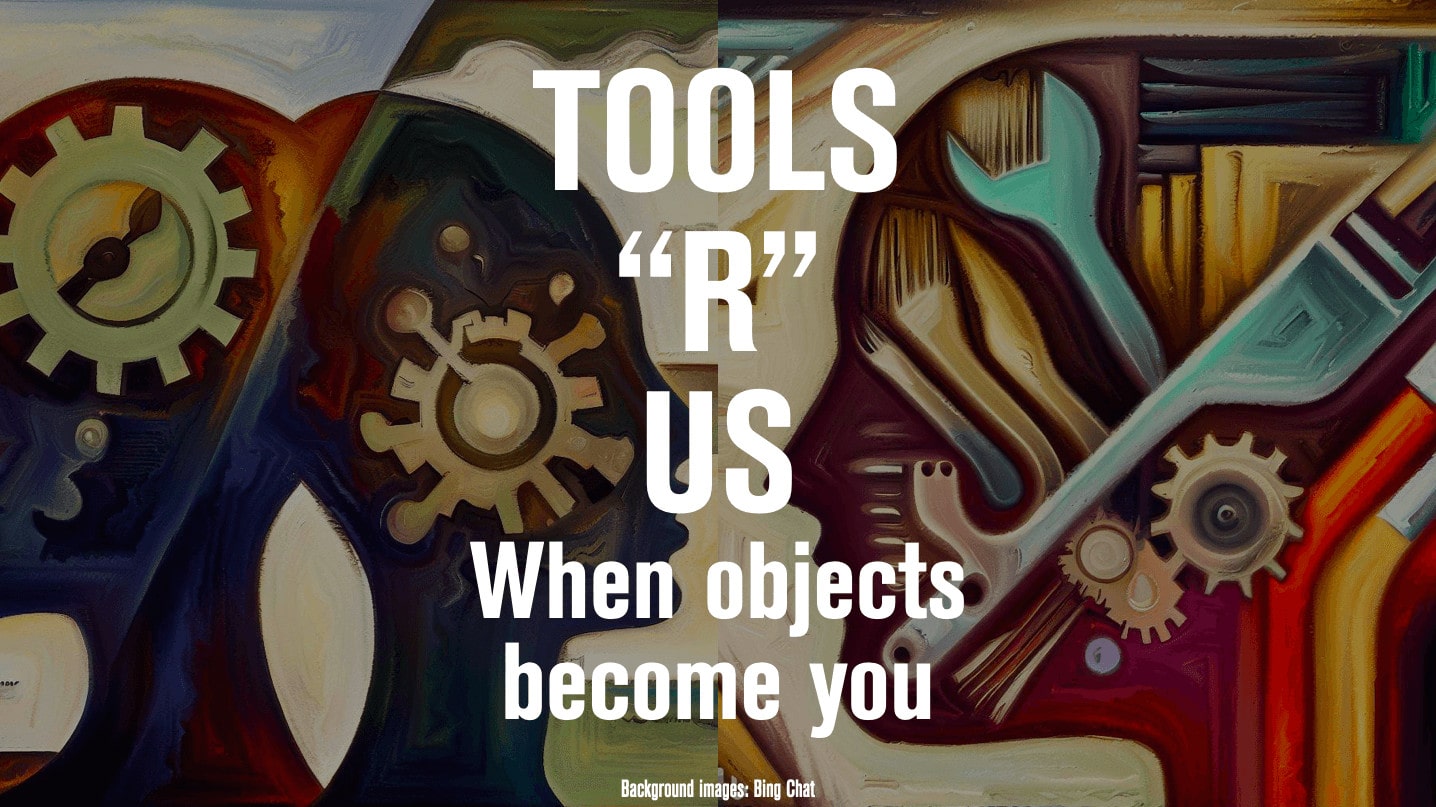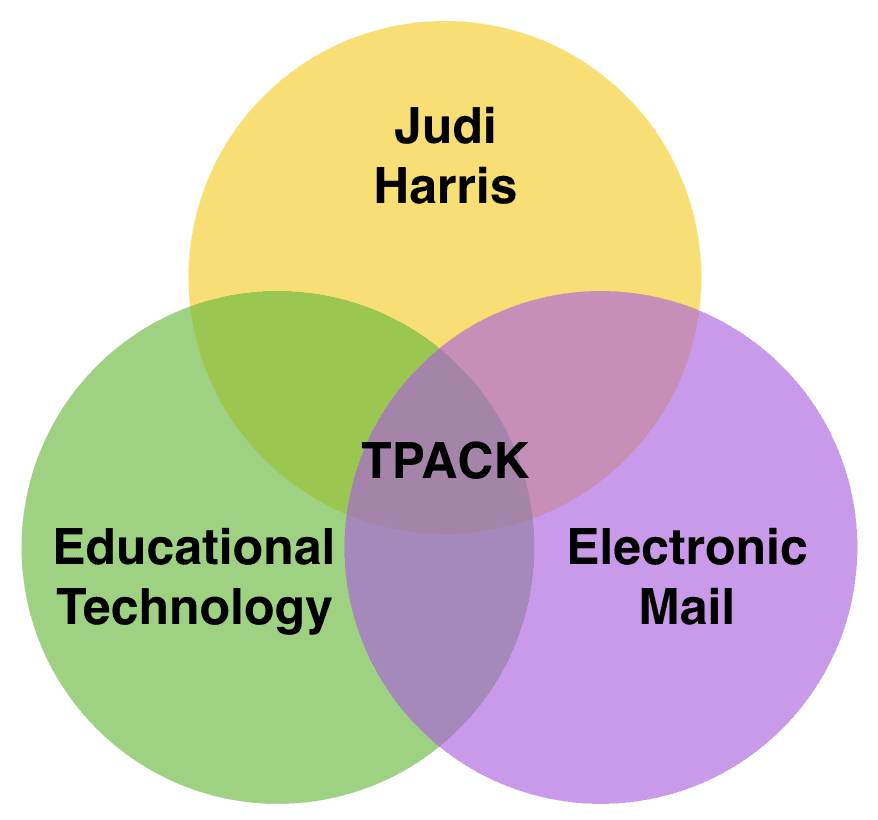Danah Henriksen shared an article with me recently “When objects become extensions of you.” It is an interesting piece arguing that “Whether they are tools, toys, or mirror reflections, external objects temporarily become part of who we are all the time.” Essentially, the author argues that when we say that a tool we use has become a part of us we are not just using fanciful or metaphorical language, but rather that, in some sense, our brain actually perceives the tool as being an extension of our self.
The article also describes some interesting scientific research demonstrating this, including the famous example from Vilayanur Ramachandran on how he cured patients who had phantom limb pain, due to amputation, through tricking them with either a fake rubber hand or a mirror. (This insight, incidentally, ended up becoming a side-story in the TV series House). A similar idea has gone mini-viral on YouTube because of videos such as the one below.
I remember many years ago speaking with a surgeon who did intricate surgery using robotic hands that he would manipulate with his real hands. And he spoke about how with time he truly felt that the robotic hands were his hands, though initially they had felt very separate from him. The brain had filled in the gap between his hands and the robotic hands and had “extended his self.”

The article also reminded me of teaching my kids how to drive, again many years ago. The important thing, I remember telling them, was that they were now inhabiting a bigger body, and one that was asymmetric (since there was less of the body on the driver’s side than on the other). It is only when their brain “accepted” this that they could become good drivers. For instance, we know novice drivers often drive too far over on the passenger’s side, because they their brains and bodies have not yet understood this asymmetry.
Now there is nothing utterly surprising about this. All of us who wear glasses know this. Our glasses become part of us, in a deep fundamental way. So much so that I sometimes keep trying to take them off even if I am not wearing them.
I did have one quibble with the article and the title which suggested that these tools become extensions of us. I would argue for a stronger position “these tools become us.”
I say this because I think there is a deeper philosophical issue here. We often say “I have an arm” – without considering who the “I” is in this case. This is similar to the idea that “I have thoughts” without questioning who is the “I” and what its status would be without thoughts. This is a descartian idea of “self” that has thoughts, does things, has hands and feet. In contrast, I feel more comfortable with a more embodied view which leads to a very different and “diffuse” idea of body and mind together constituting the self.
Now this embodied perspective is difficult to describe primarily due to constraints in the very language we use, and may even to deeper, to a fundamental illusion of an “I.” A more embodied approach would take a somewhat different view of the self – as being body and mind together. So in specific cases, say of wearing glasses, or holding a stick (in the example given in the article) or of my my surgeon friend doing robotic surgery, my perspective is that these tools do start out as extensions, but over time, become part of the self. They become invisible, they become a part of you.
These ideas are consistent with Maturana and Varela’s idea of “embodied self.” They argued against the traditional cartesian idea of a separation between mind and body instead suggesting that our cognitive processes are deeply linked to our bodies and how we interact and engage with the world. There is a dynamic interplay, they suggest, between our body, sensory experiences and the world, which in turn shapes perception, cognition and our sense of self. This is a fundamental shift in how we think about our-self, embracing as it does the complex relationship between the body, the environment, and the mind.
Thus, our minds are not isolated entities but are intimately connected to the world we inhabit and the manner in which we engage with this world. Till humans developed tools these ways of engagement were through our senses, but these senses can be expanded through tools. It is no surprise, if we accept this idea of an embodied self, that these tools would, in turn, change our perceptions and cognition, and thereby our sense of self.
In our recent conversation with Chris Dede about AI, we spoke about how AI is an alien form of intelligence, primarily because so much of our intelligence and cognition comes from being situated, physically, in the world, and our ability to act on it. AI, at least the current versions, just work in the world of language (or other abstractions) lacking any connections to the “real” world. This is what I tried to capture in my post about Chat GPT3 being a bulls*** artist. Chris, in our conversation, spoke about Hubert Dreyfus’ criticism of AI (in a book written 50 years ago titled “What computers can’t do.”) along these very same lines.
All that said, there is one powerful idea in this article that I must point out and appreciate, and something that I had not truly grasped, before reading the piece. Towards the end the author writes that
When you hold your smartphone in your hand, it’s not just the morphological computation happening at the surface of your skin that becomes part of who you are. As long as you have Wi-Fi or a phone signal, the information available all over the internet (both true and false information, real news and fabricated lies) is literally at your fingertips. Even when you’re not directly accessing it, the immediate availability of that vast maelstrom of information makes it part of who you are, lies and all. Be careful with that.
Now that was not something I had truly thought of. The cellphone, and by extension the entire internet, the good the bad the ugly (sometimes the very ugly), particularly given the amount of time we spend on it, is now not just a part of us, not just an extension. It is us! It seems to me, just off the bat, that the implications of this are profound, though I am not entirely sure how one can describe or explain what that means.

Postscript (4/11/23): A recent story in today’s New York Times (Can Intelligence Be Separated From the Body?) echoes some of these same issues: A few key quotes below:
What is the relationship between mind and body?
Maybe the mind is like a video game controller, moving the body around the world, taking it on joy rides. Or maybe the body manipulates the mind with hunger, sleepiness and anxiety, something like a river steering a canoe. Is the mind like electromagnetic waves, flickering in and out of our light-bulb bodies? Or is the mind a car on the road? A ghost in the machine?
Maybe no metaphor will ever quite fit because there is no distinction between mind and body: There is just experience, or some kind of physical process, a gestalt.
These questions, agonized over by philosophers for centuries, are gaining new urgency as sophisticated machines with artificial intelligence begin to infiltrate society. Chatbots like OpenAI’s GPT-4 and Google’s Bard have minds, in some sense: Trained on vast troves of human language, they have learned how to generate novel combinations of text, images and even videos. When primed in the right way, they can express desires, beliefs, hopes, intentions, love. They can speak of introspection and doubt, self-confidence and regret.
But some A.I. researchers say that the technology won’t reach true intelligence, or true understanding of the world, until it is paired with a body that can perceive, react to and feel around its environment. For them, talk of disembodied intelligent minds is misguided — even dangerous. A.I. that is unable to explore the world and learn its limits, in the ways that children figure out what they can and can’t do, could make life-threatening mistakes and pursue its goals at the risk of human welfare.





My friend and I came across this site after discussing how driving a vehicle and understanding the shape of it while moving around expands the spatial awareness of the space you take up. She then talked about tools becoming an extension of the body and that in a way, tools become apart of us. She decided to look up some discussions about it and linked me this 🙂
Great read, and becoming all the more relevant each day.
I did have a thought about the internet being us. I think of it as an extension of our brains, but all of the information being free floating neurons. Each time we connect to it, we expand our brain further into the internet. I guess I would compare it to a fungus expanding in branches to a box of uninhibited nutrient sources. Because this food is accessible without access, at this point only existing to be used by the fungus, the fungus can expand into it as it ‘wants’. The nutrients are not necessarily the fungus until the fungus uses it…We are only apart of the internet in the ways we explore it. I would say the internet is the collective of humanity, and each of us expands into it, consumes and contributes to it in our own way.
Sorry for the ramble, I’m essentially just typing whatever comes to mind. Thanks for the read!
Cheers!